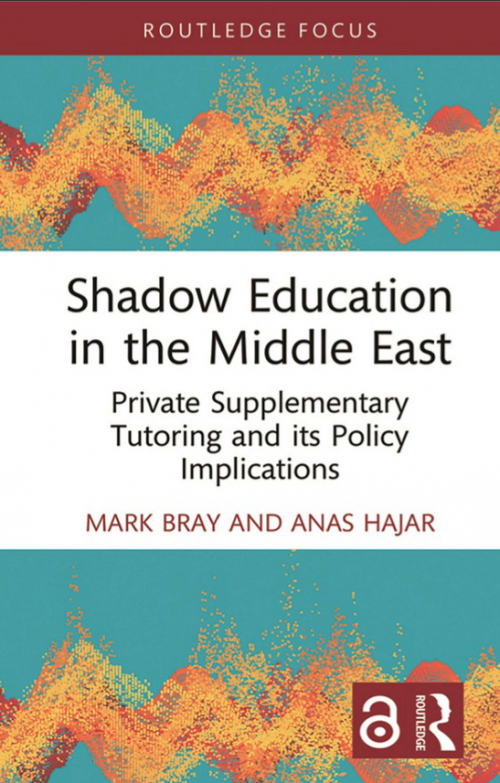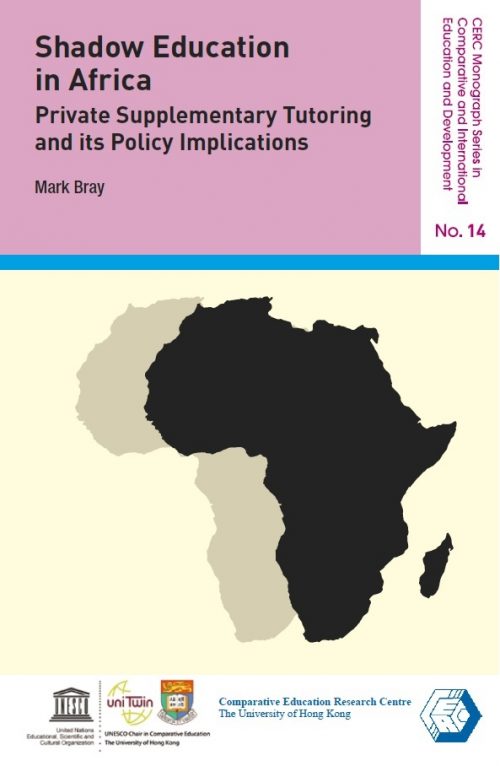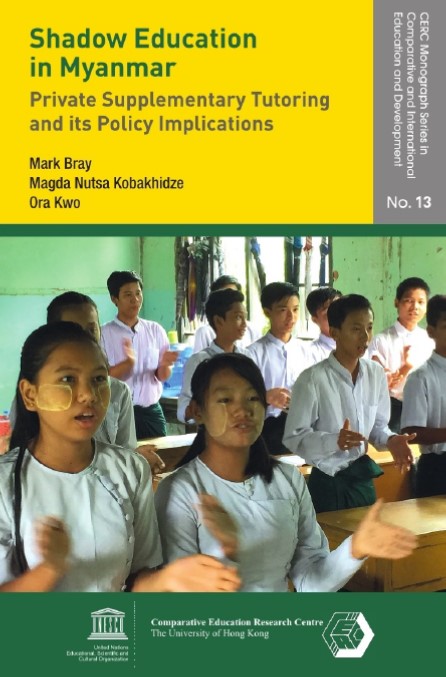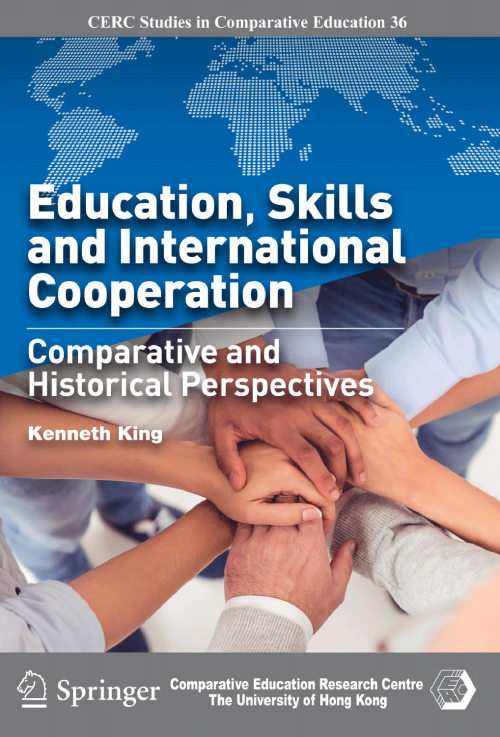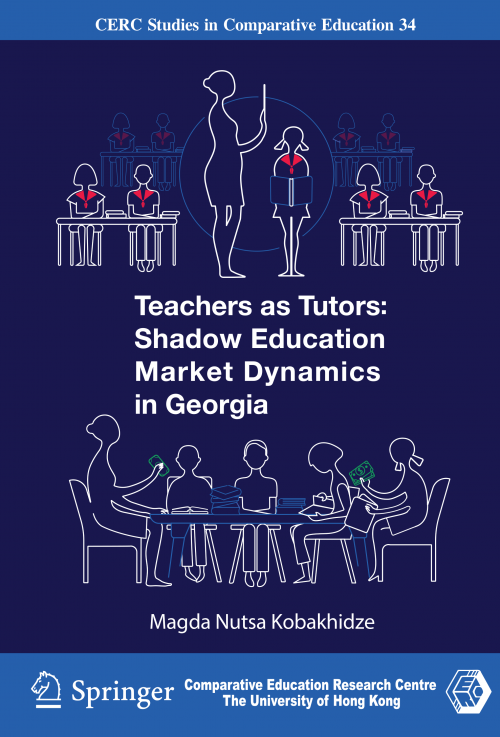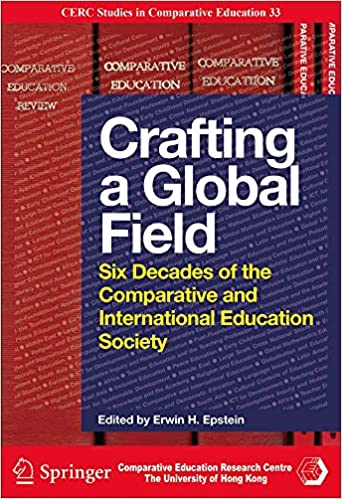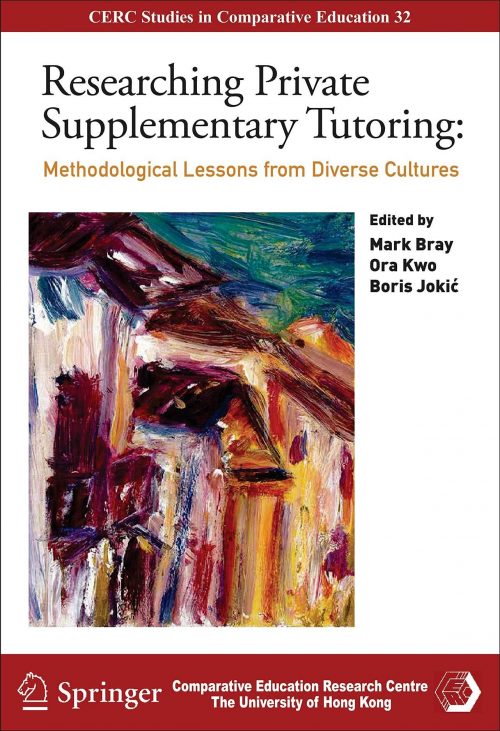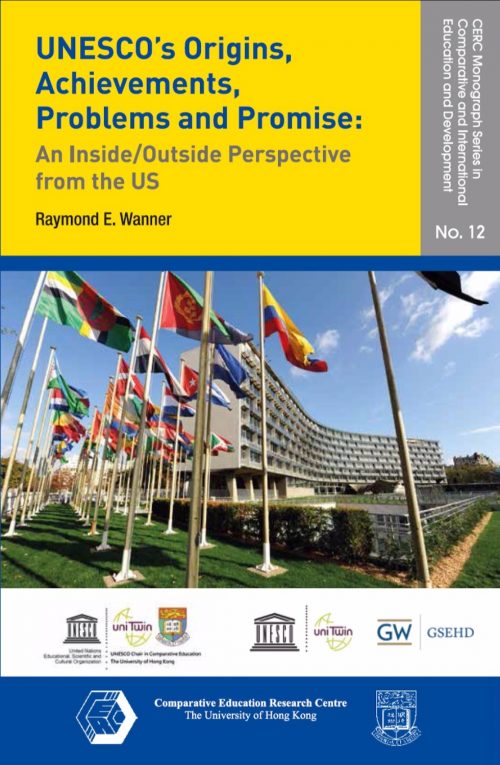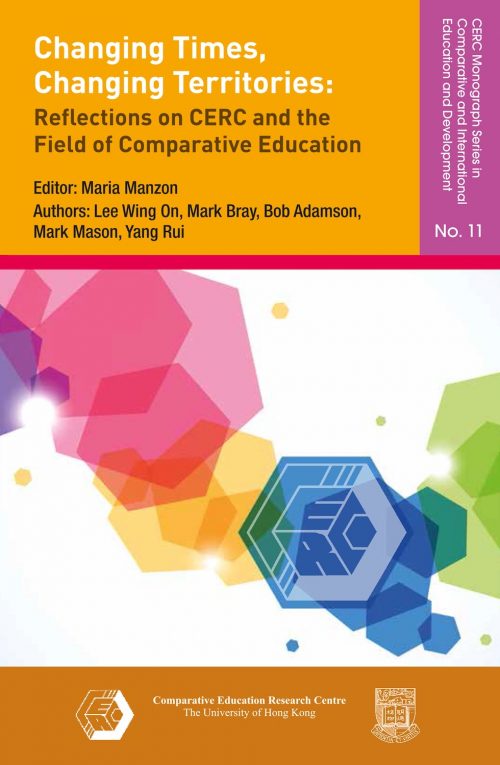Download the article:
 Academic-Praxis.1.37-51.Ugolini.pdf
Academic-Praxis.1.37-51.Ugolini.pdf
In the contemporary, globalized, neoliberal landscape of higher education, the increasingly intertwined relationship between government, industry, and universities is changing the nature and mission of higher education. The imperative of economic growth imposes new demands on the type of graduates that are needed to enter the workforce, and consequently on the priorities that universities should set. The call to innovate cannot be ignored if a university wishes to survive.
Within the context of higher education, innovation has predominantly resulted in an increased focus on STEM research, entrepreneurship, technological advancement, and engagement with the industry beyond the walls of the university. This innovative model seems to stand in stark contrast to the small, residential, liberal arts college model. In the current landscape of “utilitarian” education, does a liberal arts education still make sense? Is innovation possible outside of STEM and entrepreneurship? In recent years, several liberal arts colleges across the United States have been forced to close their doors permanently, following years of stagnant enrollments, shrinking endowments, and unsustainable operating costs. This begs the question of whether the model of education they offer is still relevant today, and what capacity they have for innovation.
In this paper, I argue that in the context of innovation in higher education, liberal arts colleges have much to offer. In particular, I argue that innovation is not limited to STEM and business, but can occur within the humanities and social sciences as well. The key to the liberal arts existential question of how to innovate and survive lies precisely in redefining the scope of what can be innovated, and the meaning of innovation itself, challenging the misguided preconception that any infusion of technology in education is necessarily innovative and aligned to the fundamental goals of education. I will address innovation in higher education following four main themes, namely industry partnership and fundraising, curriculum, technology, and research. I will focus on undergraduate college education, drawing examples primarily from one case study, that of my alma mater, Bennington College.
Bennington College
Bennington College is a private liberal arts college located in Vermont with a population of roughly 700 undergraduate students. It was founded in 1932 as part of a group of experimental colleges – including Sarah Lawrence College, Antioch College, and Black Mountain College – whose goal was to explore new approaches to higher education. In particular, the mission of the College – with progressive educators William Kilpatrick and John Dewey serving on the board of trustees – emphasized self-directed, hands-on learning, a teacher-practitioner model, and individual graduate-style advising for students (Reynolds, 1997; Vision and History | Bennington College, n.d.).
Despite enduring a tumultuous decade in the 80s and early 90s, culminating in extensive reforms under President Coleman, Bennington College continues to defy the odds in a climate that has forced many comparable liberal arts colleges – including some of its neighbors, such as Green Mountain College and Marlboro College – to permanently close. Several articles written on the College have defined its approach – particularly in the last few years – as innovative and entrepreneurial (Hibel, 2017; Lorin, 2019; Rendon, 2019).
Industry Partnerships and Fundraising
The focus on hands-on experience has been a fundamental component of Bennington’s mission since the beginning. This is carried out in the curriculum through the completion of a required yearly non-residency term known as Field Work Term, a seven-week term in the winter, where students leave campus and pursue internships or independent projects in their fields of interest.
Field Work term is not only an opportunity for students to gain practical experience and exposure in their areas of interests, but it can also be seen as a way of broadening the School’s network and developmental periphery – to borrow Burton Clark’s (1998) term – by forming relationships with organizations and companies interested in hiring students for a short term. The connection between Field Work Term and the school’s developmental periphery has been pursued more intentionally in the last few years. One example of this is a partnership started in 2018 between the College and the Lucille Lortel Theatre Foundation in New York City to sponsor several students interning at off- Broadway theatres during their Field Work term.
A similar approach also resulted in a partnership established with the Helen Frankenthaler Foundation in 2015 providing students with a yearly five-month internship at major cultural institutions in New York City. As recently as January 2021, the College was also awarded a grant by the Henry Luce Foundation to start a fellowship for students interested in pursuing internships related to public service.
Other initiatives have looked at finding creative and innovative ways of fundraising. One such initiative called “The 24-Hour Plays” brings together the student, faculty, and alumni community to write, rehearse, and perform plays in 24 hours. Proceeds from ticket sales go towards specific initiatives at the College.
Partnerships have not been limited to organizations and foundations, but have also looked at collaborating with other liberal arts colleges in the area. The College has established a cross-enrollment scheme with Williams College for students to take courses at both campuses. This is similar to other inter-school partnerships such as the Five College Consortium and The Claremont Colleges. In 2019 the College entered into a new partnership with Middlebury College to host several of the Middlebury Language School courses on campus during the summer.
Arts, humanities, and public action are fundamental components of the success of all these initiatives. By leveraging the College’s mission and finding organizations and schools that share the same goals and values, Bennington was able to expand its network and fundraising efforts. The pursuit of partnerships for Field Work term which offer grants to students has allowed the College to improve its non-residency offerings while offsetting the cost of these programs. Partnerships such as the one with Middlebury College allow not only for an increase in revenue but also for more efficient use of campus space and facilities during the summer.
Curriculum
Curricular innovation in the liberal arts looks very different from that of large research universities. The growing emphasis on skill training demanded by the industry and economy is transforming universities into “professional training schools” which are expected to infuse students with up-to-date skills relevant to the careers they will undertake. Lee et al. (2019) highlight how the pressure imposed on higher education by neoliberalism and the knowledge economy is threatening the very existence of traditional universities. While universities’ cost of attendance continues to rise, students’ preparedness to enter the workforce is in constant decline. This is contributing to a devaluation of college degrees in favor of short courses for targeted skill training (Lee et al., 2019).
The widening gap between university and industry is not so much a misalignment between curricular content and required skills, but a fundamental disagreement on what the nature of universities ought to be and on what ought to be taught, in so far as training and higher education are not the same. In a context where skills and knowledge evolve and obsolesce quickly, universities are caught in an endless race to keep abreast of relevant knowledge. In this context, educational innovation should seek to invest in developing skills that cannot easily become obsolete. Differently from training, which aims at developing specialized skills, higher education (at the undergraduate level) should focus more on the development of so-called transferable skills, such as critical and creative thinking, writing, problem-solving, argumentation, and collaboration.
Against the skills and knowledge specialization that industries demand today, innovation should seek to question the very boundaries that delimit each field, in pursuit of a more interdisciplinary approach. Bennington’s academic model of self-directed, interdisciplinary learning is not new and somewhat echoes what Charles Eliot introduced at Harvard in the late 1800s (Christensen, 2011). At a time when technological advancement requires students to be flexible learners, interdisciplinary learning seems to have regained relevance and innovative power. In the 1990s, during a controversial and tumultuous time in Bennington’s history, departments were eliminated. The idea was that if the College was to truly embrace interdisciplinary learning, the courses offered could not be delimited by departmental boundaries. Thus, students now can take a class on environmental science that also draws from criminal and environmental justice, such as the course “Beyond Plastic Pollution”; students studying advanced Japanese language can enroll in a course titled “#Stop Asian Hate: Taking Actions Against Hate” which addresses the rise of violence against Asian people in the US and the history between Japan and the US through analysis of Japanese written sources (Bennington College Curriculum Fall 2021 – Fall 2021, n.d.).
Interdisciplinary learning at Bennington is further enabled by the absence of the traditional structure of majors and minors. Students are required to create and propose a plan of study which typically identifies a few central questions and topics that the student wishes to address during their time at Bennington and a few key relevant subject areas. The Plan is reviewed yearly by a committee of professors who individually meet with every student and advise them on how to pursue the proposed plan. Students’ academic plans culminate in the production of advanced- level work which takes the shape of theses, poetry collections, music productions, art exhibits, etc.
Technology
Curriculum and technology are deeply intertwined. The current trend in higher education – precipitated by COVID-19 and the need to shift lessons online – points in the direction of digitized instruction replacing traditional modes of teaching. The benefits are clear. Online learning is cost-effective in that it does not require campus space and it can attract a wider audience because there are neither physical limits (i.e., size of an auditorium) nor limits of place and time, as students can tune into the class from wherever they are, and even follow classes asynchronously. This mode of teaching is also more affordable and individualized, as it allows for self-paced learning. However, at the same time, it can also be highly impersonal. The bigger the class, the less time instructors can devote to the needs of each student. Large, online classes tend to stifle opportunities for in-class discussions and active learning, favoring passive lecture-style instruction.
If one gap between industry and university is on the content of the curriculum, the other is on what the quintessential objective of higher education should be. The growing presence of technology on university campuses offers an opportunity to reflect on what the meaning of higher education is. Past-President of Wiliams College, Adam Falk, remarks that this is not the first time in history where education has been confronted with technology that seeks to advance distance and self-paced education (Falk, 2013). He mentions New York University’s Sunrise Semester televised university courses, taught by NYU professors, and broadcasted on television, among other attempts. However, he remarks that while technology will certainly change and improve learning, it will never completely replace traditional modes of teaching. While technology may be very well suited for training courses, where the main objective is the transfer of specific knowledge, education and particularly higher education cannot be reduced to an act of knowledge transfer.
Central to John Dewey’s pedagogical philosophy, and by extension Bennington’s, was the emphasis on education “as preparation for responsible life in a democratic society” (Reynolds, 1997, p. 2). For Dewey (1916), learning is not a passive process of knowledge absorption, but an active one of learning through inquiry, personal reflection, and application. Collaboration, active participation, and deliberation are fundamental to shaping not only good students but also good members of a community, whether that be in a family, workplace, university, etc. Fundamental to democratic living for Dewey was the idea of each possessing individual perspectives and being able to consider them in relation to the views of others, arriving at compromises and solutions through discussion. Education should serve a social function of educating students to be democratic citizens, solving societal or natural problems collaboratively, through a process of hypothesis and testing. In order to develop a democratic ethos in students, universities ought to mirror democratic and representative structures of society (Bacon & Sloam, 2010), becoming sites where students can practice active community living by forming student governments, signing petitions, voting, holding “town-hall” meetings, etc. The residential campuses of small liberal arts colleges act as small communities where students can practice active, participatory, democratic living with their fellow students, faculty, and administrative staff. In keeping with Dewey’s philosophy, the curriculum and teaching style at these colleges emphasize learning through experience, favoring collaborative hands-on work and active discussion.
Ultimately, this may come down to society’s definition of what the goal of higher education should be, although I would argue that at a time when humanity is facing the disastrous consequences of anthropogenic climate change and a decline in democracy, the world could use a few more community-minded citizens. If we understand education’s mission to be as such, then the idea of technology fully replacing traditional higher education appears to be a step backward on the innovation ladder. That is not to say that technology does not have a place in higher education and the liberal arts curriculum, but that the addition of technology should not come at the expense of higher education’s existential mission.
The opportunity afforded by technology to engage experts and professors around the world can enhance the learning experience of students. Additionally, courses that are supposed to teach elementary topics could benefit not only from online instruction but also from applications of artificial intelligence to individualize students’ experience and learning, such as Arizona State University’s math courses which use adaptive technology to offer individual, personalized tutoring (College Algebra Online for Credit | ASU Universal Learner Courses, n.d.).
Bennington College is harnessing the power of distance learning to engage the wider world community, by offering a few distance learning courses each semester open to all learners as young as high school students around a variety of topics, from writing to anthropology to public action, to languages, and more (Bennington Plus | Bennington College, n.d.). Nonetheless, these opportunities remain faithful to the pedagogy of Bennington, of student-centered, experiential, and interdisciplinary learning.
The last component of the learning experience is the relationship with professors, a tenet of the liberal arts college experience. Falk argues that if higher education were simply an act of knowledge transfer and acquisition, campuses would have been extinct with the advent of the textbook, or of televised lessons (2013). Learning is a process of human interaction, “a social activity that takes its highest form within a real community of students and faculty” (Falk, 2013, p. 99). This interaction is not limited to discussions, collaborations, and critiques among students, but also applies to mentorship between professors and students. At a time in the lives of students when they are attempting to figure out who they want to be in this world, the relationships built with professors are key. This can be lost in distance learning, particularly if a university uses distance learning as an opportunity to boost enrollment numbers, as time will not allow for professors to engage meaningfully with each student. It is not technology per se that is incompatible with one-on-one mentoring, but the motivations behind adopting such technology.
Teaching and Research
In 1994, Bennington College was one of the first schools in the US to abolish tenure for all faculty members, a decision that sent shockwaves through the university world in the United States. An article published on the Harvard Crimson seems to reassure the public that something like that could never happen at an Ivy League (Schaffer, 1994).
Bennington adopted a teacher-practitioner model, meaning that all subjects are taught by teachers who are actively engaged in the field they are teaching. Art is not taught by art academics, but by practicing artists whose work is widely recognized outside of Bennington. Vermont State Senator Brian Campion teaches courses in public action and is director of public policy programs; former Iranian delegate to the United Nations Mansour Farhang and ANC member and anti-Apartheid activist Mac Maharaj both taught politics at Bennington, among many other notable teacher-practitioners. Faculty members are hired on renewable contracts, the length of which can vary from 3 to 10 years, subject to evaluation of their teaching, advising, professional work, and service to the college (Hibel, 2017).
This model allows teachers to fully embrace what they are interested in and bring it to the classroom. Teachers’ work is supposed to be in “fruitful interaction” (Hibel, 2017) with what they teach, and not in conflict with it, as it often is the case at large universities where tenure-track faculty are not interested in teaching undergraduate courses. The absence of rank between professors further ensures a student-centered approach.
For this reason, new courses are constantly being offered in response to teachers’ and students’ interests. This also allows for students to be constantly involved in teachers’ work, not just as research assistants, but as active participants. Entire courses have been centered around faculty-led projects. One example is a year-long course titled Art in the Public Realm taught by a visual arts professor and a public action professor. The course brought together a small group of students from a variety of disciplines to conceptualize, design, create, and install an outdoor commission for the US Embassy in Oslo (Bennington College – Art in the Public Realm – U.S. Department of State, n.d.). The final piece, titled Arctic Shifts is currently on display outside of the Embassy.
Conclusion
In this essay I have presented a case study of innovation in an American liberal arts college to argue that innovation is possible for small liberal arts colleges, and can originate from within the arts, humanities, and social sciences. Innovation is a broad term that seems to necessarily imply greater involvement of technology, distance learning, skill training, and industry partnerships. However, I argue that innovative approaches are not unidirectional, and that innovating should not compromise the essential goals of education.
Liberal arts colleges present models of innovation that are seemingly contrasting with the trends of large research universities. One model of innovation is not necessarily better than the other. As technological advancement, economic development, and climate change will continue to make new demands on the purpose and mission of higher education, solutions will require flexible and various approaches to innovation.
References
Bacon, M., & Sloam, J. (2010). John Dewey and the Democratic Role of Higher Education in England. Journal of Political Science Education, 6(4), 336–352. https://doi.org/10.1080/15512169.2010.518087
Bennington College – Art in the Public Realm – U.S. Department of State. (n.d.). Retrieved June 15, 2021, from https://art.state.gov/bennington- art-in-embassies-oslo-arctic-shift/
Bennington College Curriculum Fall 2021 – Fall 2021. (n.d.). Retrieved June 15, 2021, from https://curriculum.bennington.edu/fall2021/
Bennington Plus | Bennington College. (n.d.). Retrieved June 15, 2021, from https://www.bennington.edu/bennington-plus
Christensen, C. M. (2011). The innovative university: Changing the DNA of higher education from the inside out (1st ed.). Jossey-Bass.
Clark, B. R. (1998). Creating Entrepreneurial Universities: Organizational Pathways of Transformation. Issues in Higher Education. Elsevier.
College Algebra Online for Credit | ASU Universal Learner Courses. (n.d.). Retrieved June 15, 2021, from https://ea.asu.edu/courses/college- algebra-and-problem-solving-mat-117/
Dewey, J. (1916). Democracy and education: An introduction to the philosophy of education (First Free Press paperback edition 1966). Free Press; Collier-Macmillan.
Falk, A. F. (2013). Chapter 8: Technology in Education. In R. Chopp, S. Frost, & D. H. Weiss (Eds.), Remaking College: Innovation and the Liberal Arts College (pp. 96–104). Johns Hopkins University Press.
Hibel, A. (2017, November 30). A College without Departments or Majors: Making Inquiry-Based Learning Work. HigherEdJobs. https://www.higheredjobs.com/HigherEdCareers/interviews.cfm?ID=14 69
Lee, Y., Moon, G. G., & Kwon, Y.-K. (2019). Implementing liberal arts education in the era of the Fourth Industrial Revolution: Lessons and implications for Korea’s higher education policy. International Review of Public Administration, 24(4), 282–294. https://doi.org/10.1080/12294659.2019.1700646
Lorin, J. (2019, July 29). The $70,000-a-Year Liberal Arts College Just Won’t Die. Bloomberg. https://www.bloomberg.com/news/articles/2019-07- 29/the-70-000-a-year-liberal-arts-college-just-won-t-die
Rendon, J. (2019, July 16). How One Small Liberal-Arts College Is Revamping Its Fundraising. The Chronicle of Philanthropy. https://www.philanthropy.com/article/how-one-small-liberal-arts- college-is-revamping-its-fundraising/
Reynolds, K. C. (1997). Progressive Ideals and Experimental Higher Education: The Example of John Dewey and Black Mountain College. Education and Culture, 14(1), 1–9.
Schaffer, S. J. (1994, October 26). Ever Innovative, Bennington Abolishes Tenure, Departments | News | The Harvard Crimson. The Harvard Crimson. https://www.thecrimson.com/article/1994/10/26/ever- innovative-bennington-abolishes-tenure-departments/
Vision and History | Bennington College. (n.d.). Retrieved June 9, 2021, from https://www.bennington.edu/about/vision-and-history
To Cite This Article:
Ugolini, B. (2021). Innovation and Liberal Arts Education. Academic Praxis, 1: 37-51.
Other Recent Articles
 Chinese Students Collaborating Across Cultures Does International Higher Education Benefit from Collaborations? International education is argued to create better opportunities for higher learning if university program designers engage both personal and collective agency in studies of foreign languages and societies (Oleksiyenko and Shchepetylnykova, 2021), and thus increase students’ chances for greater engagement with alternative learning styles and contexts (Li, 2014; Phuong-Mai, et al., 2005). Yet, achieving a highly efficient design for cross-cultural learning is a challenge when courses prioritise technical… Read more
Chinese Students Collaborating Across Cultures Does International Higher Education Benefit from Collaborations? International education is argued to create better opportunities for higher learning if university program designers engage both personal and collective agency in studies of foreign languages and societies (Oleksiyenko and Shchepetylnykova, 2021), and thus increase students’ chances for greater engagement with alternative learning styles and contexts (Li, 2014; Phuong-Mai, et al., 2005). Yet, achieving a highly efficient design for cross-cultural learning is a challenge when courses prioritise technical… Read more Ukrainian Academics in the Times of War On February 24, 2022, Russia launched a brutal full-scale war of aggression against Ukraine. Eight years after the invasion of the Crimea and Donbas, the Russian government acted on Vladimir Putin’s assertions that Ukraine is not (and should not be) a country – a view deeply ingrained in propaganda-addled Russian popular opinion, to attempt to obliterate the Ukrainian state and identity. The Russian army has been bombing Ukrainian cities, including residential areas, universities and schools.… Read more
Ukrainian Academics in the Times of War On February 24, 2022, Russia launched a brutal full-scale war of aggression against Ukraine. Eight years after the invasion of the Crimea and Donbas, the Russian government acted on Vladimir Putin’s assertions that Ukraine is not (and should not be) a country – a view deeply ingrained in propaganda-addled Russian popular opinion, to attempt to obliterate the Ukrainian state and identity. The Russian army has been bombing Ukrainian cities, including residential areas, universities and schools.… Read more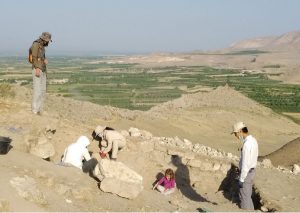 Interdisciplinary Learning in an Intercultural Setting During Archaeological Fieldwork Since archaeology studies the full spectrum of the human past, it is naturally an academic discipline that engages a very wide range of topics – spanning the humanities, social sciences, physical sciences, and technology. Often, archaeological projects also take place in international settings, with team members joining from around the world. Therefore, archaeological fieldwork offers an ideal laboratory for experimenting with interdisciplinary learning in intercultural settings. Over the last several years, our project has engaged… Read more
Interdisciplinary Learning in an Intercultural Setting During Archaeological Fieldwork Since archaeology studies the full spectrum of the human past, it is naturally an academic discipline that engages a very wide range of topics – spanning the humanities, social sciences, physical sciences, and technology. Often, archaeological projects also take place in international settings, with team members joining from around the world. Therefore, archaeological fieldwork offers an ideal laboratory for experimenting with interdisciplinary learning in intercultural settings. Over the last several years, our project has engaged… Read more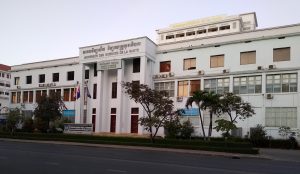 Higher education in Cambodia: Reforms for enhancing universities’ research capacities While Cambodian higher education is facing many challenges (see Heng et al., 2022a; Sol, 2021), the major issue that calls for reforms is a limited research capacity of Cambodian universities and academic staff. This problem needs immediate attention. Policy actions are required to improve the research landscape in the country and empower local academics for a more productive and impactful academic performance. In the following sections, I elaborate on my arguments Limited research output:… Read more
Higher education in Cambodia: Reforms for enhancing universities’ research capacities While Cambodian higher education is facing many challenges (see Heng et al., 2022a; Sol, 2021), the major issue that calls for reforms is a limited research capacity of Cambodian universities and academic staff. This problem needs immediate attention. Policy actions are required to improve the research landscape in the country and empower local academics for a more productive and impactful academic performance. In the following sections, I elaborate on my arguments Limited research output:… Read more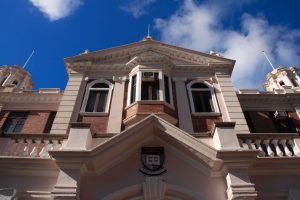 Experiential Learning at the University of Hong Kong Innovation in education always starts with an idea which gradually develops into on-the-ground practices, and can then spread to different areas in an education institute. In higher education, innovation can be demonstrated in various ways. While people might relate innovation naturally with the use of new and advanced technology, curriculum can also be an area where innovative ideas are applied. In fact, as scholars have highlighted, innovation aimed at transforming the curriculum was beneficial not… Read more
Experiential Learning at the University of Hong Kong Innovation in education always starts with an idea which gradually develops into on-the-ground practices, and can then spread to different areas in an education institute. In higher education, innovation can be demonstrated in various ways. While people might relate innovation naturally with the use of new and advanced technology, curriculum can also be an area where innovative ideas are applied. In fact, as scholars have highlighted, innovation aimed at transforming the curriculum was beneficial not… Read more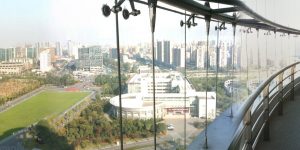 Conceptualization and Development of Global Competence in Higher Education: The Case of China The notion of global competence of students increasingly raises concerns among both educational researchers and practitioners. In 2018, the PISA tests assessed global competence of 15-year-old students for the first time (OECD, 2018). According to OECD, such a multidimensional capacity has been identified as the individual ability of examining “local, global and intercultural issues”, understanding and appreciating “different perspectives and world views”, interacting “successfully and respectfully with others, and taking “responsible action toward sustainability and… Read more
Conceptualization and Development of Global Competence in Higher Education: The Case of China The notion of global competence of students increasingly raises concerns among both educational researchers and practitioners. In 2018, the PISA tests assessed global competence of 15-year-old students for the first time (OECD, 2018). According to OECD, such a multidimensional capacity has been identified as the individual ability of examining “local, global and intercultural issues”, understanding and appreciating “different perspectives and world views”, interacting “successfully and respectfully with others, and taking “responsible action toward sustainability and… Read more Quiet Leadership in Schools: A Personal Reflection This article argues for the importance of quiet, introverted leaders in international schools as a counterbalance to the extroverts who seem to make up the bulk of leadership posts in these institutions. It builds on essays by Liz Jackson (2021) and Bruce Macfarlane (2021), which explore leadership in university settings. These authors examine the de facto expectations of leaders to be outgoing and forceful, but challenge the idea of the heroic leader, suggesting that more… Read more
Quiet Leadership in Schools: A Personal Reflection This article argues for the importance of quiet, introverted leaders in international schools as a counterbalance to the extroverts who seem to make up the bulk of leadership posts in these institutions. It builds on essays by Liz Jackson (2021) and Bruce Macfarlane (2021), which explore leadership in university settings. These authors examine the de facto expectations of leaders to be outgoing and forceful, but challenge the idea of the heroic leader, suggesting that more… Read more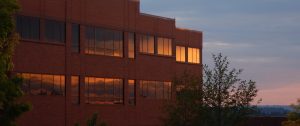 Academic Praxis: An Editorial Note The recent special issue which I co-edited with my colleague, Liz Jackson, discussing dilemmas affecting the freedoms of speech, teaching and learning in the post-truth age (see Oleksiyenko and Jackson 2020), points to the importance of developing an academic praxis, in which each of us continually questions the purposes, processes and values of teaching, learning and inquiry. These days, I am increasingly inclined to think of higher learning as a journey of ceaseless introspection, which… Read more
Academic Praxis: An Editorial Note The recent special issue which I co-edited with my colleague, Liz Jackson, discussing dilemmas affecting the freedoms of speech, teaching and learning in the post-truth age (see Oleksiyenko and Jackson 2020), points to the importance of developing an academic praxis, in which each of us continually questions the purposes, processes and values of teaching, learning and inquiry. These days, I am increasingly inclined to think of higher learning as a journey of ceaseless introspection, which… Read more



